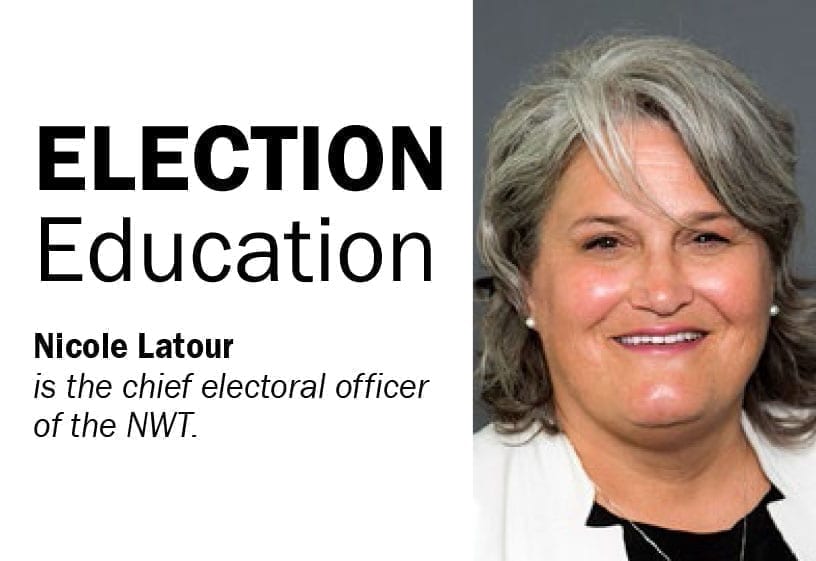One of the principal mandates of the Office of the Chief Electoral Officer is to remove any barriers, perceived or real in order to facilitate voting.
Ensuing accessibility in all forms is essential to getting ballots in to the hands of electors.
Not only is there accessibility to the ballot, but also to sites and information.
Accessibility to your ballot is achieved through the availability to a number of polls or voting opportunities. We have talked about the newly introduced absentee online option but there are other opportunities that should be highlighted as well.
 Expanded from the previous 10 days to 21 days, you may visit the office of your Returning Officer and cast your ballot until Sept. 28 at 2 p.m. Outlying communities without a resident Returning Officer may cast a ballot at an advanced poll from Sept. 24 to 27.
Expanded from the previous 10 days to 21 days, you may visit the office of your Returning Officer and cast your ballot until Sept. 28 at 2 p.m. Outlying communities without a resident Returning Officer may cast a ballot at an advanced poll from Sept. 24 to 27.
Beginning Sept. 17 until Sept. 20, electors may make an application for a mobile poll to be brought to them. And by 2 p.m. on Sept. 21 electors may also apply for the ballot by mail, as well as the online, absentee ballot.
In short this electoral event has ensured more accessibility to a ballot through a number of different means that ever before. Accessibility needs are also addressed through the provision of large magnifiers for the visually impaired.
Any elector who has a disability that impedes their ability to cast their ballot independently may also request assistance form either an election officer or a trusted person of age who accompanies them to a polling place or has a poll brought to them.
When selecting both Returning Officers’ office space and polling stations there are three factors that are heavily considered: accessibility, proximity and familiarity.
It is quite common for electors to say they have been voting at the same place for years.
Historical voting places prevents voter confusion, but may also consider journey times to and from the poll and the use of a building that provides barrier free entry for electors with mobility issues.
Establish polling places in a barrier free building can be a challenge, especially in the smaller communities. It is not uncommon to see polling places in a school or community hall that already complies with accessibility building standards.
In the event an office or polling station can’t comply we readily devise ramps or other means to ensure barrier access exists. The final component of accessibility that is provided for by Elections NWT is access to information. The information essentially strives to educate.
Information is provided to educate an elector allowing them to be ready and achieve barrier free participation in the electoral process.
There is also education/information for prospective candidates and their official agents so they may understand their statutory obligations as well as information and exercises to educate election officers.
The common thread of all information is that it stems from the Elections and Plebiscites Act but has been presented to be easily understood by all stakeholders. This is the seventh of an eight-week informational series from Elections NWT in News/North leading up to the Oct. 1 election.
Visit electionsnwt.ca for any information you might need. And of course, go ahead create your account at electorhood.ca.